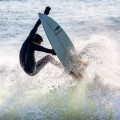
Clonakilty
Clonakilty is a multiple award-winning town on the coast within the heartland of West Cork. The town has an historical feel to it and its streetscapes are renowned for colourful and meticulously maintained shop and pub fronts, directional signs and street names.
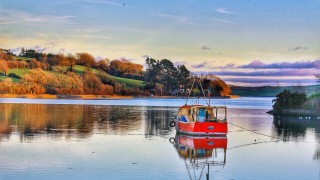
Directions
Located on the N71, 52km west of Cork City.
Special Areas of Conservation
Clonakilty Bay
About
Extraordinary floral displays can be seen throughout the town right through the summer months. The surrounding area features some of Ireland’s most spectacular scenery and beaches, including the popular seaside resort of Inchydoney.
Clonakilty District was awarded the title of European Destinations of Excellence — Best Emerging Rural Tourism Destination 2007, and in 2011 Clonakilty became the first town in Ireland to join a global go-slow movement that places quality of life above the clamour of modern living. The town is part a select group of 142 cities and towns in 24 countries that constitutes the Cittaslow network. Clonakilty was the first town in Ireland to receive Fair Trade status and a number of shops, restaurants, cafes and hotels offer a selection of Fair Trade products.
Designated as West Cork’s Heritage Town by Board Failte, a visit to the town of Clonakilty soon shows why. The Post Office is housed in an old Presbyterian church and the Town Council and Library in a converted Corn Mill with the river flowing beneath. Narrow streets and lanes open into elegant squares. It is a town of tall spires, towers and historic buildings — the brewery buildings, the mills and the quayside warehouses all tell of the town’s busy trading and industrial past.
Discover the Locality
History
This colourful and vibrant town can trace its origins far back in time to Bronze Age settlements. The area is rich with the remains of its early Celtic civilisation.
A well-preserved stone circle stands in a roadside field at Templebryan, one mile north of Clonakilty, and evidence of ringfort dwelling places of Bronze Age people dot the landscape.
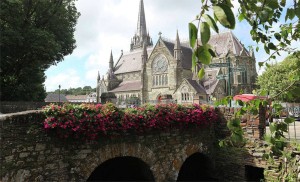
As for Clonakilty’s recorded history, an early Christian settlement existed at Kilgarriffe, one mile north-west of the town and it is recorded that a charter was granted by Edward I to Thomas de Roach in 1292 to hold a market here every Monday. In 1305, when de Roach sold his manor and lands to Maurice de Rochfort, whose family had come from France, he in turn petitioned Edward I to confirm this granting of the market.
The name Clonakilty first appears in writing in 1378 as Clogh na Kylte, meaning ‘Castle of the Woods’ (gaelic, Cloch na gCoillte) in a plea roll, as part of the property and lands of William de Barri. This castle is thought to have been on the site of the present Church of Ireland and a stone from the castle is now sited at Asna Square in Clonakilty town, which is known as ‘The Kilty Stone’. The woods referred to a great swathe of forest, which stretched from almost the present day Enniskeane to Clonakilty Bay.
Following a succession of wars against English rule culminating in the Battle of Kinsale in 1601, Ireland saw the end of the old Gaelic order who fled to the continent and became known as ‘the Wild Geese’. The plantation of the south by English Protestants now began in earnest. Richard Boyle, later to become the great Earl of Cork, arranged for 100 families to come mainly from Somerset, to the ancient settlement of Clogh na Kylte. He obtained a charter of incorporation creating the ‘Sovereign (mayor) and borough of Clogh-nikilty’. The town prospered despite on-going attacks by the dispossessed Irish, and many fine buildings were erected.
The Market House, later the Town Hall, on McCurtain Hill was built in 1696 and still survives. In the centuries, which followed, trade increased and quays, corn stores and mills were built. An extensive brewery was erected by the Deasy family in 1808 to replace an earlier one of c1768.
Another reminder of the town’s brewing and bottling past is the collection of colourful old Clonakilty bottles, displayed in most bars in the town. A shipyard flourished at Deasy’s Quay, and vast quantities of corn and potatoes were exported to Dublin and Cork from Clonakilty’s busy quays. However the largest industry was linen. Clonakilty alone had 1,000 looms and a further 10,000 people were employed in the district, making Clonakilty the largest linen manufacturer in the province of Munster. To accommodate the dealers, a spacious Linen Hall was built in 1817 beside the ‘Wheel of Fortune’ water pump in Connolly Street. This prosperity was reflected in the fine Georgian dwellings of the merchants at Shannon Square (now Emmet Square).
Clonakilty Town is interesting in that the buildings show much of the economic and social change over the centuries. One example is the present town hall and library, which was once a corn mill driven by the river flowing beneath it. The old mill has been lovingly restored and the unusual curve of the roof preserved. There is much interest in restoring traditional shop fronts and old buildings in the town. A good example is Spiller’s Lane, a sunny walkway next to the Post Office, where the entrance to an old builder’s yard has been converted into a courtyard with several shop units. The original stonework and old passages have been revealed in the course of the restoration work, giving a glimpse of 18th century Clonakilty, the period in which much of the town was built.
Tadhg O’Donovan Astna
Over the centuries, various attempts at throwing off the yoke of English rule were made, and Clonakilty people were always active in such attempts. One of the best documented is the Battle of the Big Cross in 1798 which was the scene of the only action of the 1798 rebellion to take place in Munster.
The Big Cross was a crossroads between Ballinascarthy and Clonakilty where local insurgents, armed chiefly with pikes and led by Tadhg O’Donovan Astna, attacked a British force but were defeated with the loss of up to 100 men on the rebel’s side including O’Donovan Astna. The statue of the pikeman, and the square in which it stands, Astna Square, are named in honour of him.
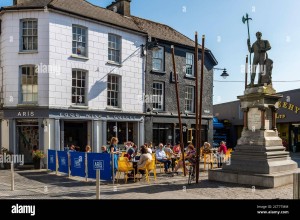
Michael Collins
Michael Collins, one of the greatest Irish military and political leaders was from Clonakilty. Collins was born in 1890, the youngest of eight children and the family lived at Woodfield (Sam’s Cross), 6km west of Clonakilty. He attended school in Clonakilty in what is now the Parish Hall, next to the Catholic Church.
The young Michael Collins emigrated to England in 1906 where he worked in the Post Office and other financial institutions and was a member of several Irish organisations. In 1916 he returned to Ireland and joined the Irish Volunteers. He took part in the famous Easter Rising in Dublin and was imprisoned for a short time. Upon his release, he masterminded the guerrilla war against British rule, which intensified until 1921, when the British sought a truce. Collins went to London as a delegate to negotiate a treaty, which was signed in December 1921.
However, there was a split between pro and anti-treaty supporters in Ireland, which culminated in the start of a Civil War in June 1922. Michael Collins, as Commander of the Free State (pro-treaty) army, left Dublin for the south, possibly to seek an end to the Civil War. On August 22, his convoy was ambushed at Beal na Blath, near Crookstown, north of Enniskeane, and Collins was killed in the crossfire. He was buried in Glasnevin Cemetery in Dublin. A large monument marks the site of the ambush at Beal na Blath.
Clonakilty Museum displays a lot of Collins memorabilia and historical information from the time of the Civil War. The museum is open at Western Road, Clonakilty, from May to September 10.30am to 5pm daily and 2.30 to 5pm on Sundays.
A seven foot bronze statue of Collins stands at the edge of Emmet Square in Clonakilty, where Collins lived with his sister Margaret from 1904 to 1906. The statue was unveiled in 2002 by actor Liam Neeson who portrayed Michael Collins on film.
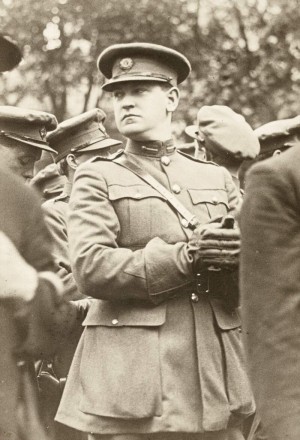
The American Flying Fortress
“T’aint a Bird”, an American flying fortress plane was forced to land a mile from Clonakilty on April 7th, 1943. The plane was on its way from Africa to England when it strayed off course and ended up hovering over Clonakilty very low on fuel, eventually force landing on White’s Marsh between the mainland and the island of Inchydoney.
The crew of ten passengers and a pet monkey landed safely and were accompanied to O’Donovan’s Hotel by the Local Defence Force. They remained there for three days, the hotel taking on a carnival atmosphere in war-time, rationed Clonakilty.
Eventually a mobile runway was laid and the plane took off for England via Shannon on May 2nd, 1943, leaving behind their monkey. “Tojo” lived on at the hotel and is buried in the yard of the hotel where the Venue now stands, with full military honours.
On Sunday, 17th July, 1988, the Warplane Research Group of Ireland erected a plaque to commemorate the landing of Taint-a-Bird. It was unveiled by Eddie Collins of Inchydoney who was the first to greet the crew in 1943.
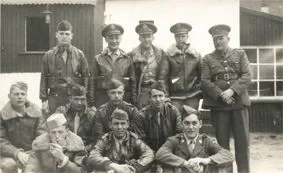
Church of the Immaculate Conception
This cathedral sized church was opened for worship on Sunday 25th July, 1880, after 10 years work. The opening ceremony was a very elaborate affair attended by three bishops including the Archbishop of Cashel Dr. Croke and hundreds of clergy. Thousands of town and country people thronged the streets of the town, which were decorated with triumphal arches and festoons of evergreens.
The task of building this magnificent church was undertaken by Fr. Matthew O’ Donovan when he was appointed parish priest of Clonakilty in 1868, but unfortunately he was never to see it completed, as he died in 1875.
The church is 18th century French Gothic in style and was designed by the Dublin architect C.S. Ashlin, and is of green sandstone which was quarried locally and dressed in the yard by local craftsmen. Wicklow granite is used in the surrounds of the doors and windows. The spire was erected in the 1890s, the stones of which were dowelled into one another, each section being built and erected at ground level by the firm of John Sisk and Sons at Cork before being removed to Clonakilty by train. The bell was installed in 1898.
The inside of the church reveals some fine examples of stained glass, hand carved statues and altars in pure white Sicilian marble. The altar of the Sacred Heart is the work of James Pearse, father of Padraig Pearse, patriot and leader of the 1916 rising.
Things to do
Clonakilty offers a wonderful selection of shops, art galleries and craft shops to potter around. It also caters well for children with the West Cork Model Railway Village, a playground and cinema. And of course the beautiful local beaches are the only place to be when the sun shines! It is an ideal holiday destination and a perfect base from which to tour West Cork.
Jungle City
2012 brought an exciting new outdoor art project to Clonakilty in the form of its very own Jungle City.
‘Jungle City Clonakilty’ saw the creation and permanent installation of 24 beautifully painted, life-sized endangered animals. Visitors and residents have the opportunity to explore Clonakilty as they follow a colourful, fun and weatherproof safari trail through the streets and landmarks of the town.
Jungle City celebrates the magnificence of the worlds’ most spectacular yet endangered wildlife, generating awareness of their plight and making everyone smile at the same time. It sees a herd of life sized Asian elephants lead a parade of brightly painted orangutans, hornbills, tigers and crocodiles through of the worlds’ most iconic towns and cities with the aim of saving their habitat and securing their survival for future generations.
The concept has been developed by the UK charity ‘Elephant Family’ who previously worked with local artists in Clonakilty in 2008 to create a life sized herd of elephant sculptures which toured the UK and Ireland and raised €5m for the cause.
Jungle City is a permanent free exhibition.
West Cork Model Railway Village
To experience a taste of West Cork in the 1940s pay a visit to The West Cork Model Railway Village in Clonakilty. See the model towns of Clonakilty, Bandon, Kinsale and Dunmanway. Watch the miniature trains in action and don’t forget to take a road train ride around Clonakilty. A new interpretive centre exhibiting stories of the West Cork Railway opened in May 2011.
Clonakilty Market
Clonakilty Market is one of the first markets in the country to be approved under the Bord Bia ‘Good Practice Standard’. The award-winning market is also about to celebrate 400 years of market trading in Clonakilty as the charter which was established for the town in 1613 also established the right for traders to trade on market day all those years ago. The current market hosts 45 traders, mainly food, and is centrally located just off the main street beside O’Donovan’s Hotel. Another jewel in this town that already offers so many singular jewels. The market operates on Fridays from 9am – 3.30pm.
West Cork Regional Museum
The West Cork Regional Museum is situated on the outskirts of the town in the Old Methodist School on Western Road. This community museum, administered on behalf of the town by a voluntary committee, offers exhibitions relating to the political history of the area from 1800. There is particular reference to Michael Collins and Tom Barry, a history of the postal service, the GAA and the West Cork Railways. There are also displays of lace and crochet. May to September 10.30am to 5pm daily and 2.30 to 5pm on Sundays.
Pampering
You’re on your holidays, so why not treat yourself to a little pampering! Clonakilty and surrounding areas are renowned for a wide selection of treatment centres offering a range of alternative therapies, beauty and body treatments. So whether it’s a hot stone massage, a session of reflexology, an aromatherapy facial or a massage you are looking for, there are plenty of options available.
Walking
There are many pleasant walks in and around Clonakilty. See Clonakilty & Area Walks under the Walking section.
Beaches
Clonakilty is the Beach Centre of West Cork with the renowned Blue Flag beach of Inchydoney located just three kms from Clonakilty. Inchydoney, once an island and now linked to the mainland by two causeways, has one of the finest beaches in the country, two vast stretches of sand are separated by a spur called the Virgin Mary’s Bank. The natural beauty of the surrounding countryside is enhanced even more by the abundance of birdlife to be discovered on Clonakilty’s tidal bay, marshes and hinterland. This beach is accessible by car. Public parking and toilets provided adjacent to the beach and lifeguards are on duty on weekends during the bathing season (lifeguard times are posted on the information noticeboard on the beach). Toilet facilities for people using a wheelchair are available at the hotel, which is located adjacent to the beach.
Numerous other unspoilt sandy beaches, coves and harbours nearby are a must to be explored. Duneen, not far past Dunmore, is an attractive secluded cove with rocks for the adventurous. Dunnycove is a rocky little beach, protected by a headland with a ruin on it, the water is very calm and on a clear day much of the seabed can be seen. Red Strand is a long beach between two headlands. The sand itself is not red, the name comes from the colour of the cliffs.
Galley Head, with its lighthouse, is well worth a visit for its views. Nearby, Owenahincha has interesting rocks and sand dunes and is lovely for walking but is not deemed safe for swimming due to strong currents. Further west, The Warren, a beach to the left of Rosscarbery causeway, is a very sheltered and safe area for bathing and has a lifeguard on duty in summer. There is a short pleasant cliff walk between the Warren Strand and Owenahincha.
Long Strand, on Rosscarbery Bay, is a mile and a half of sand bounded by waves of dunes. This is the perfect place to stretch your legs and breath in the fresh Atlantic air. The top end is a haven for surfers but the rest of the beach is unsafe for bathing due to a dangerous undertow.
Surfing
The Surfing scene in West Cork is exploding. Drive down to Inchydoney beach in Clonakilty any evening or weekend during the summer months and dotted in the water are lots of surfers trying their hand at what’s fast becoming one of Ireland’s most popular adventure sports. Once you’re tried it, it’s easy to see how so many people become hooked on this exhilarating sport. Nothing quite beats the thrill of catching your first wave.
Inchydoney beach is a kilometre of golden sandy beaches and picturesque settings compares to no other in terms of a surfing beach. A low gradient shoreline makes ideal conditions for beginners and intermediate surfers. While, a broad tidal range offers up some excellent sandbars for the more advanced surfer looking to top up on the adrenaline levels! Open to swells rolling in from all sides of the Atlantic Ocean, Bay of Biscay and the English Channel; Inchydoney is hard to beat for consistent year round surfing.
Whale and Dolphin Watching
Coastal waters off the south and west of Ireland are a summer feeding area for a number of whale species and a year round home for several resident dolphin species including Harbour porpoises. Whales commonly seen off the south coast include Fin whales, Humpback whales and Minke whales, which makes whale watching in West Cork some of the best in Europe.
Fishing and Angling
Clonakilty, Courtmacsherry, Timoleague and Rosscarbery have some of the best fishing Ireland has to offer. Here in West Cork, the quality of almost all aspects of fishing is second-to-none, whether you are a novice or professional, a freshwater or seawater angler, or purely want to try the sport for the first time while on your holiday. River fishing is popular on the Bandon and Argideen Rivers and also at Lisselan Estate for salmon and sea trout.
Golf and Pitch and Putt
Clonakilty has a golf course at Lisselan Estate. Lisselan is also renowned for its fantastic gardens.
Clonakilty Waterfront Marathon
The Clonakilty Waterfront Marathon, half-marathon and six mile mini-marathon takes place in December amidst an atmosphere of festive fun and friendship.
The West Cork weather can usually be relied upon to provide perfect running conditions for the picturesque coastal roads around Clonakilty. The marathon also takes runners through the postcard pretty villages of Ardfield and Rathbarry, creating a heady and healthily challenging mix at a seasonally quiet time of year for the sport.
With entrants from the UK, USA, the Netherlands, Germany, Switzerland and Israel joining Irish athletes, this is truly an international affair. Local people line the routes to support runners and walkers alike while musicians keep spirits high along the route.



